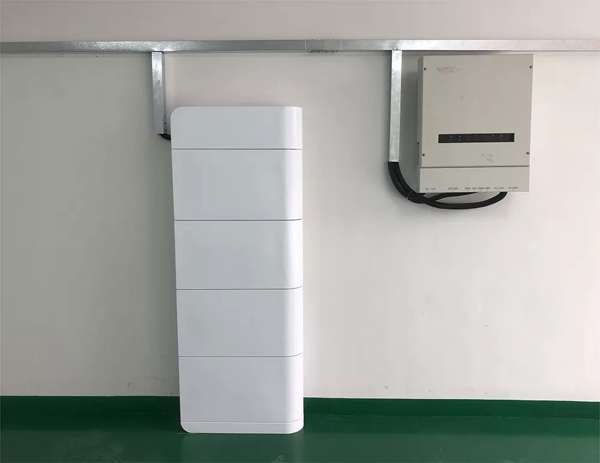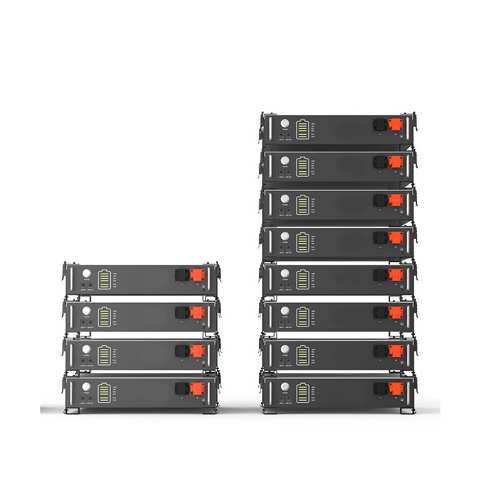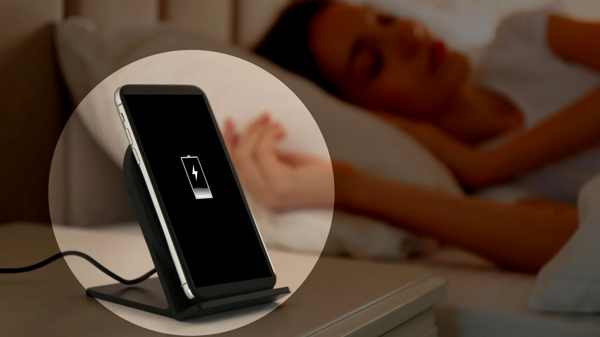Can Lithium Batteries Be Mounted in Any Position?
When you’re planning an energy storage installation, space and placement are major considerations. You might be wondering, are there strict rules about how lithium batteries must be oriented? Can they be mounted vertically on a wall or on their side? This is a great question, and the answer reveals one of the key advantages of modern battery technology.
Yes, for the most part, modern sealed lithium-ion batteries can be mounted in any position – vertically, horizontally, or on their side. This is especially true for the high-quality Lithium Iron Phosphate (LFP) batteries used in today’s advanced wall-mounted battery storage systems. This flexibility is possible because, unlike traditional flooded lead-acid batteries, they contain no free-flowing liquid electrolyte that could leak out.

At Gycx Solar, this flexibility is something we leverage all the time to create clean, efficient, and space-saving installations for our customers. The ability to mount a powerful battery securely on a wall is a game-changer for home energy storage. Let’s explore this and other practical questions about lithium batteries.
Can lithium batteries be mounted vertically?
Limited on floor space? Looking for a clean, unobtrusive installation for your battery system by mounting it vertically on a wall? For the right type of lithium battery, this is not only possible but is often the intended and ideal orientation.
Absolutely. Sealed lithium-ion batteries, and particularly the LFP (Lithium Iron Phosphate) technology found in the majority of modern wall-mounted battery systems, are perfectly suited for vertical mounting. Their internal construction, which typically uses solid electrodes and either a gelled or polymer electrolyte held in pouch or prismatic cells, means there is no liquid to spill or leak. The cells are securely housed within a robust casing, allowing them to operate safely and effectively in any orientation, including vertically on a wall.

Dive Deeper: The Freedom of Form Factor
The ability to mount lithium batteries vertically is a direct result of their advanced, sealed design.
- No Liquid Electrolyte: The primary reason traditional flooded lead-acid batteries must be kept upright is their liquid sulfuric acid electrolyte. If you were to tip them, acid would spill out, causing damage and creating a serious safety hazard. Sealed lithium batteries have no free-flowing liquid, completely eliminating this problem.
- Engineered for Versatility: Manufacturers of wall-mounted batteries design their products with vertical installation as the primary use case. The internal components are secured to handle this orientation, and the mounting hardware and enclosure are specifically engineered for a safe and secure wall attachment.
- Benefits of Vertical Wall Mounting:
- Saves Valuable Floor Space: This is a major advantage, especially in garages, utility rooms, or basements where floor space is at a premium.
- Aesthetically Pleasing: Wall-mounted units often have a sleek, modern design, turning a piece of utility equipment into a feature that looks clean and futuristic.
- Out of the Way and Safer: Mounting the battery on a wall can keep it away from potential bumps, spills, or flooding on the floor, and out of the reach of children or pets.
At Gycx Solar, we specialize in designing and installing these elegant wall-mounted battery solutions. They truly embody the modern advancement of lithium technology, providing powerful energy storage in a compact, safe, and flexible form factor that fits seamlessly into our customers’ homes.
How much ventilation does a lithium battery need?
When planning the location for your battery system, ventilation is an important safety consideration. But how much airflow does a lithium battery actually require? The answer is different from traditional lead-acid batteries and is focused on cooling rather than gassing.
Lithium batteries, especially LFP types, do not produce flammable hydrogen gas during normal charging cycles like flooded lead-acid batteries do. Therefore, they don’t require the same high level of ventilation to prevent gas accumulation. However, they absolutely do need adequate ventilation for thermal management – in other words, for cooling. All batteries generate some heat when charging and discharging. The amount of ventilation needed depends on the size of the battery system, its charge/discharge rate, and the ambient temperature of the room to ensure it doesn’t overheat.

Dive Deeper: Ventilation for Cooling, Not Gassing
Let’s clarify the ventilation needs for lithium batteries:
- No Hydrogen Gassing: This is a major safety advantage. The electrochemical process in lithium-ion batteries does not involve the electrolysis of water under normal conditions. This means you don’t have the risk of explosive hydrogen gas buildup, allowing for more flexibility in installation locations compared to flooded lead-acid batteries.
- Heat is the Enemy: Batteries operate most efficiently and have the longest lifespan when kept within a specific temperature range (e.g., typically 15-30°C or 59-86°F). Charging or discharging generates heat. If this heat cannot dissipate, the battery’s temperature will rise, which can accelerate degradation and, in extreme cases, trigger safety shutdowns by the BMS.
- Ventilation Requirements:
- Manufacturer Specifications: Always follow the manufacturer’s installation manual. It will specify the required clearance distances around the battery unit (top, bottom, and sides) to allow for proper convective airflow. For example, a wall-mounted battery manual might require 6 inches of clearance on each side and 12 inches above and below.
- Ambient Temperature: In a cool basement, passive ventilation might be sufficient. In a hot garage or in a tropical climate like here in Singapore, ensuring good airflow is even more critical. For large systems in enclosed spaces, active ventilation (like an exhaust fan) might be necessary to pull warm air out and bring cooler air in.
- System Size: A larger battery bank that is charged or discharged at high power rates will generate more heat and require more consideration for cooling.
- The Role of the BMS: The Battery Management System (BMS) is your safety net. It constantly monitors the battery’s temperature and can reduce the charge/discharge rate or even shut the system down completely if it gets too hot. However, you should rely on good ventilation design as your primary method of cooling, not the BMS shutdown feature.
Should you run a lithium battery all the way down?
To get the most value and longest life from your lithium battery investment, it’s important to understand the best usage practices. A common question is whether you should use every last bit of power before recharging.
No, as a general rule, it is not recommended to regularly run a lithium battery all the way down to 0% State of Charge (SoC). While it won’t typically cause immediate failure in a modern system, doing so frequently puts more stress on the battery’s internal components and can shorten its overall cycle life. Fortunately, the integrated Battery Management System (BMS) in high-quality lithium batteries (like those in our wall-mounted solutions) is designed to protect the battery by automatically shutting it off before it reaches a truly damagingly low voltage level.

Dive Deeper: Depth of Discharge and Battery Health
Here’s why avoiding deep discharges is beneficial for your battery’s long-term health:
- Cycle Life vs. Depth of Discharge (DoD): A battery’s cycle life is inversely proportional to how deeply it’s discharged. A cycle is one full charge and discharge. A battery that is only discharged by 50% each day will last for many more total cycles than the same battery that is discharged by 90% every day. Less stress per cycle equals more total cycles over its lifetime.
- The BMS Safety Net: The "0%" you see on a display is not the true electrical zero of the cells. The BMS is programmed with a low-voltage cutoff to disconnect the battery from your loads before the cell voltage drops to a level that could cause permanent damage, like copper dissolution within the cell. So, while the BMS protects against catastrophic failure, hitting that cutoff regularly is still more stressful than operating in the middle range of charge.
- Practical Advice: The best practice is to size your battery system appropriately for your needs. Ideally, your battery should have enough capacity to cover your typical overnight usage with a comfortable buffer, so it’s not hitting the low-voltage cutoff every single morning. Let the sun start recharging it when it’s still at, say, 20% or 30% capacity.
- LFP’s Robustness: Lithium Iron Phosphate (LFP1. ) batteries, the gold standard for stationary storage like our wall-mounted batteries, are very robust and handle deep discharging much better than other lithium chemistries. This is why they are often warrantied for high DoD (e.g., 90% or even 100%). Even so, the fundamental chemistry principle that shallower cycles induce less stress over the long run still applies.
Why is my lithium battery draining so fast?
It can be concerning to feel like your newly installed lithium battery is draining more quickly than you anticipated, especially overnight. If you’re wondering where all that stored power is going, there are usually a few common culprits.
A lithium battery might drain faster than expected primarily due to higher-than-anticipated energy consumption from your household loads, which can include many small "phantom loads" from devices in standby mode. Other factors include the inverter’s own standby power draw, a battery that might be undersized for your actual needs, or, if the battery is older, natural capacity degradation.

Dive Deeper: Investigating Rapid Battery Drain
Let’s troubleshoot the common causes:
- High Overnight Loads: This is the number one reason. It’s easy to underestimate how much power a modern home uses, even when you’re asleep.
- Major Consumers: Air conditioning is a huge factor, especially in a warm, humid climate like Singapore’s. Electric vehicle charging, pool pumps, and electric water heaters are other large loads that might be running overnight.
- Phantom Loads: That TV on standby? The microwave clock? The computer that’s asleep but not off? They all draw power continuously. While individually small, collectively they can add up to a constant drain of 50-100W or more throughout the night.
- Inverter Standby Consumption: Your solar or battery inverter needs to stay on 24/7 to be ready to supply power. This idle consumption, though small, draws from the battery all night long and can account for a noticeable amount of energy use by morning.
- Undersized Battery System: The battery’s capacity (kWh) may simply be too small for your home’s overnight load profile. If your home uses 8 kWh overnight and your battery only has 10 kWh of usable capacity, it will be nearly empty every morning. This is why proper system sizing is so crucial.
- Battery Health and Degradation: If your battery is several years old, it will naturally have lost some of its original storage capacity. An older battery will therefore drain faster under the same load compared to when it was new.
- BMS Calibration: In some rare cases, the system’s Battery Management System may need to be recalibrated to provide an accurate State of Charge reading. This can sometimes be resolved by allowing the system to complete a full charge and a deep discharge cycle.
Gycx Solar story: "We worked with a client in Singapore who was surprised by their overnight battery drain. After analyzing their usage data from the system’s monitoring app, we found their air conditioning unit was set to run all night. We helped them program it to cool the room before bed and then switch to a low-power fan mode overnight. This small change allowed their battery to last until sunrise with plenty of capacity to spare."
The ability to mount modern lithium batteries in almost any position, especially vertically in sleek wall-mounted units, is a huge advantage for creating clean and space-efficient energy storage systems. By understanding the importance of proper ventilation for cooling, and best practices for charging and discharging, you can ensure you get the maximum performance and lifespan from your investment.
If you have questions about our wall-mounted battery solutions or want to design a system that’s perfectly sized for your energy needs, our expert team at Gycx Solar is here to help. Contact us for a consultation!
Understand the information concepts of LFP so that you can better compare and understand battery-related data concepts. This will help you choose the product that best suits your needs from our company. ↩
